10 Tips for Raising Grateful Kids
My two-year-old learned the phrase, “thank you” as soon as he could speak. Anytime someone does something nice for him, gives him something or does what he asks, he responds with the absolute cutest, “tank you.” And my older boys follow suit. It sure makes me feel like I am raising grateful kids.
Then, I realized that although they say those words that it’s not always followed up with action or a grateful heart or even attitude. At first, I thought it was mainly because of entitlement but found out that there are other reasons as well.
Read Next: 4 Surprising Reasons Your Children Are Ungrateful
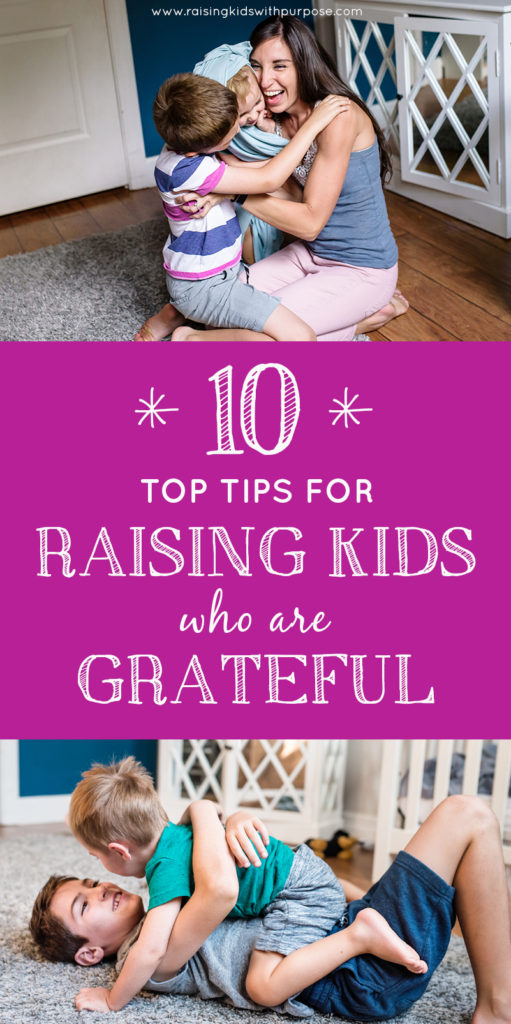
This post contains affiliate links, see disclosure policy for details.
My husband and I want to raise grateful kids who are thoughtful, compassionate, and happy. I think many parents have these same goals.
The question is then, how do we do this?
First, we need to break down what gratitude is.
For You! Sign up for my newsletter and receive a FREE Gratitude toolkit including Gratitude Poster, Random Acts of Kindness cards, Dinnertime Reflection cards, and a few worksheets that teach empathy!
Table of Contents
The Four Parts of Gratitude
When you think about gratitude, you probably think of teaching your child to say, “thank you”, at appropriate times. However, gratitude is a little more than that.
As part of the Raising Grateful Children project at the University of North Carolina Chapel Hill, the researchers found that parents are really good at telling their kids what to do to show gratitude but often neglect to teach the other three parts.
I’m sure you have said it a time or two…“Now, what do you say?”
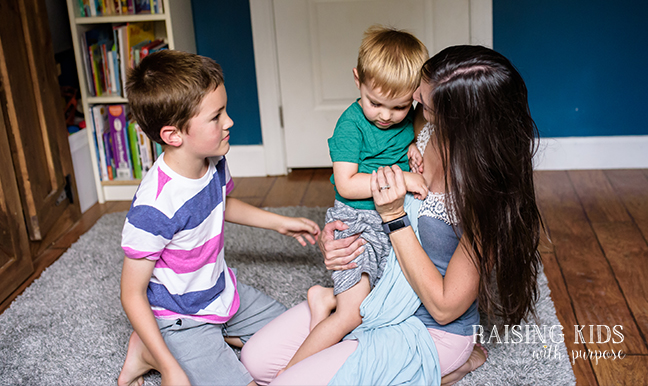
Gratitude can be broken down into four parts:
1. NOTICE – Simply take note of all that there is to be thankful for.
Use a gratitude journal, and give thanks at the dinner table or on the drive to school.
Ask: “What do you currently have in your life you are thankful for?” And “Is there something more to be thankful for than just the material item such as someone thinking about you when they bring you a gift?”
2. THINK – Take time to think about why you have the things, people, and experiences in your life.
The best time to do this is when you are having quality time together, around the dinner table, during a family meeting, or when someone does something kind.
Encourage your kids to think about these things on their own as they go on with their day.
Ask: “Do you think you earned this gift?” “What was the motive of the giver?” “Do you think every child gets to have these experiences?” “Do you think you deserved to do that or receive that gift?” “What do you think about reciprocating the gift to the person who gave that to you?”
3. FEEL – Get in touch with how the things you are most thankful for make you feel.
Have a conversation as soon as a child is given a gift or experience. You can even have your child close his or her eyes and really get in touch with how a gift or experience makes him or her feel.
Ask: “How does that make you feel?” “What part of that experience makes you the happiest?” “What kinds of feelings do you have when you think about that gift?”
4. DO – Say and take action to express gratitude.
Explaining to kids what they can do to thank someone usually happens at the moment, but can also be done anytime. Make a habit of creating thank you cards or gifts of gratitude when your child receives something.
Engaging in paying it forward or random acts of kindness is another great way to do this.
Ask: “What can you do or say to let the giver know you are thankful?” “Getting that gift makes you happy! Do you think you would want someone else to feel that way? How would you do that?”
This is a helpful video that walks you through discussions with your kid from The Greater Good Science Center. Check out more of their videos here.
It’s important to look at all of these for raising grateful kids who spread joy in the world and who become better humans and personally benefit from this daily practice.
Read Next: The Importance of Quality Time
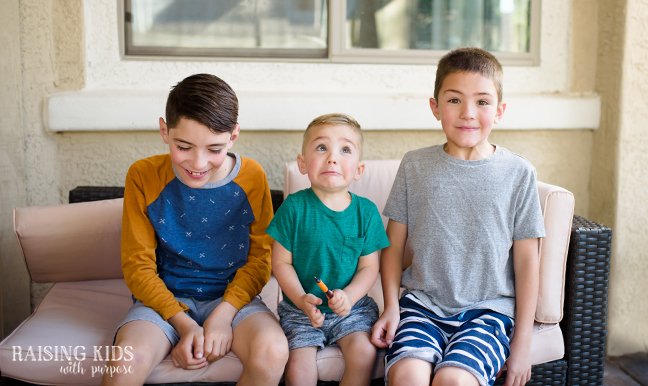
The Loss of Gratitude Over Time
The reason why it’s important to be mindfully aware of what it is that you are grateful for is that the emotional connection tends to wear off. This is something called hedonic adaptation.
Great emotions like joy and happiness or even loss and sadness dwindle over time.
This explains why kids are so excited to receive a toy but then within a few days or months (or sometimes even hours, right?!), they barely touch it.
It’s not that they don’t appreciate it, they just become used to it and the excitement goes away. Doing a toy rotation can help minimize this hedonic adaptation and keep you from feeling like you need to buy new toys constantly.
According to Greater Good Magazine, “research suggests that some degree of scarcity and restraint is more conducive to happiness.” This is good to keep in mind as we dive into all the ways we can teach and practice gratitude with our children.
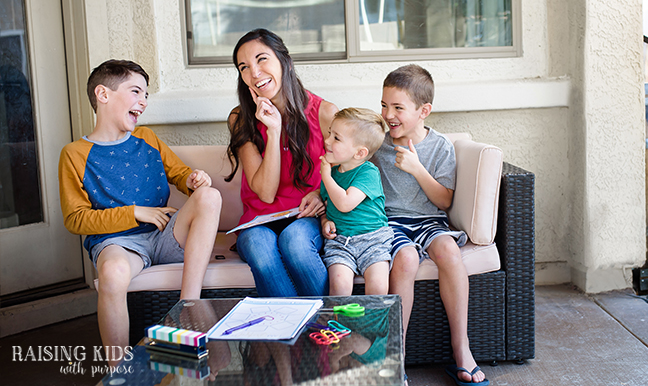
The Top 10 Ways to Teach Gratitude to Kids
With all the reasons why we don’t have grateful kids, and why gratitude is so important to our own state of being and our children’s, I wanted to know,
What can we do to make sure we are raising grateful kids?
1. Model the Behavior
This should be NUMBER one on any top list involving parenting. The single most important thing we can do is model what we want our children to learn and do.
We can talk the talk but what matters is that we walk the walk. Amiright?
If we are never thanking people or are constantly grumbling, our kids will probably follow suit regardless of the words we tell them.
During your day-to-day, find ways to express gratitude toward others. Thank someone who opens the door for you, say, “thank you” to people who let you go in front of them while driving (even though the other driver can’t even hear you; because your kids can!), or return someone’s cart at the grocery store.
When something goes wrong, verbally express the good that came from that situation.
2. Talk About Gratitude
Lately, I’ve been greeting my kids in the morning with, “I’m thankful to see your smile this morning.” Also, “I’m thankful to be your mom.” The more they see that I’m truly thankful for them, the more they will return that feeling to me and others.
Use all the questions listed under the four parts of gratitude to spark conversations. I flat-out tell my kids about what is and isn’t beneficial for their brain development.
3. Volunteer and Give Back
Put your words into action by giving your children opportunities to serve and give to others.
Volunteer at a local nonprofit or better yet, take your children on a service trip.
Most people who go outside of the country to make a change say they are the ones who come back changed.
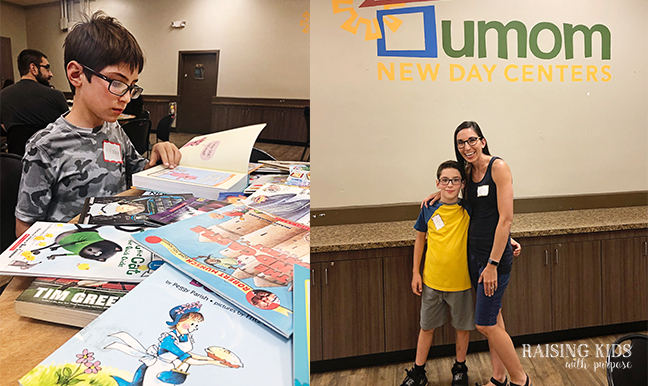
I’ve been taking my oldest to the homeless shelter to read to the kid residents. The experience has been far more impactful than I realized it would be. He is being exposed to what homelessness really looks like, not just what he assumed. Some of the kids who walk in that door don’t smell clean and are wearing clothes and shoes that are three sizes too big. However, some kids come in looking just like him with electronics in their pockets.
Seeing how others are living and thinking about and discussing their living situation has changed my son’s perspective about his own life. Every single time we get back in our van, his heart nearly bursts and explodes with joy. His experience doesn’t just end there, either. It has led to so many incredible conversations and actions of generosity.
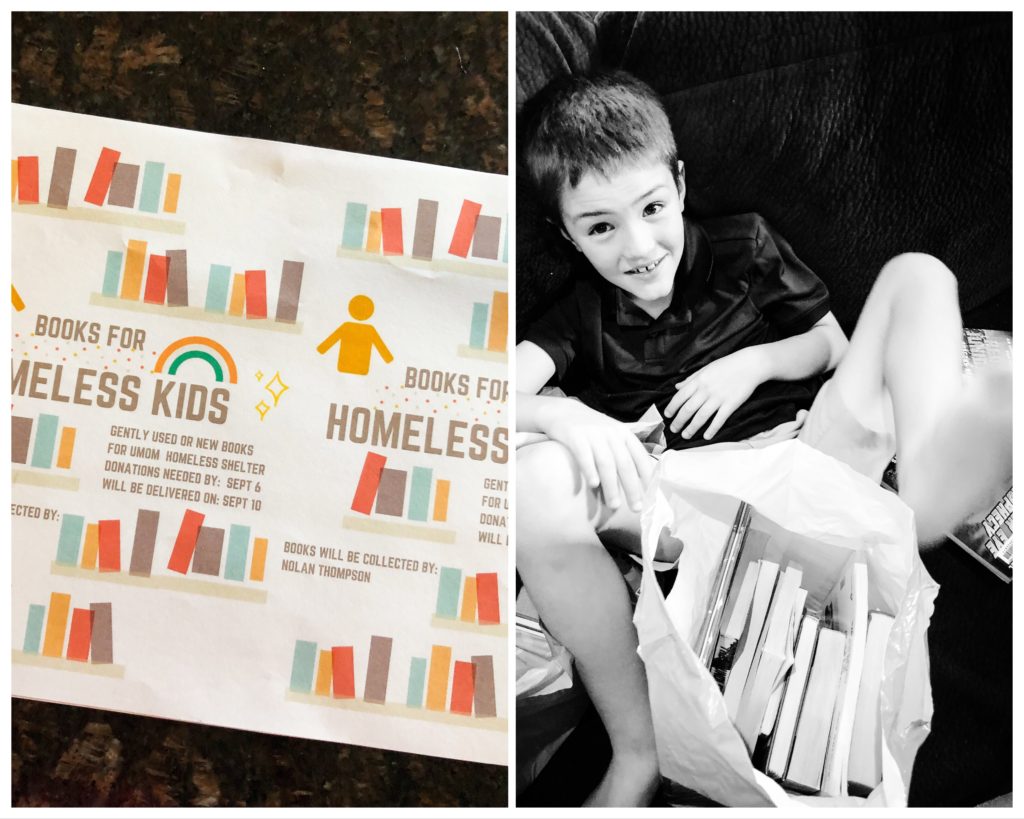
AND because of his actions, his brother has grown in empathy by wanting to give back as well. Because he isn’t old enough to volunteer, he took it upon himself to do a book drive in his class and collected over five bags of books!
4. Create Gratitude Habits
Weave gratitude into your daily life!
Here are some very simple ideas of habits that can lead to raising grateful kids.
Gratitude Journal
Every night before bed, write down three things that went well that day (even if it was a horrible day) and what you are thankful for. Turning negatives into positives is very impactful on the brain. Or if it’s too much to write it down, simply state three things!
Dinner Conversations
Every night before we start eating, we say a prayer and thank God for all the good (and not-so-good) things happening in our lives. Occasionally, each child goes around and names something they are thankful for.
Because I wanted to get more consistent with this, I created a Daily Reflection Card. It’s free for you to download as part of the Gratitude Toolkit. We want to start using these as a way to discuss the good, the challenging, and something we did that was thoughtful during our day.
PS: And to clarify in the picture below: It says, “legos ssssss. I’m a ssssnake,” because something else might jump out at you!)
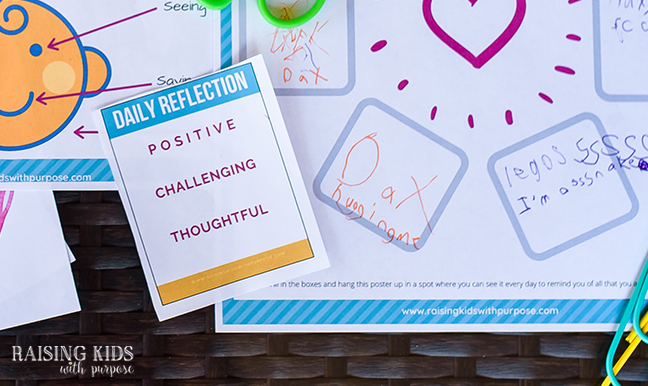
Use Pictures
If your kid has a phone, text a picture each week of something that you appreciate. My kids have watches like this so I text thankful reminders. This can spark bigger conversations on the topics of gratitude!
A friend of mine said she printed a photo I took of a cactus with bright fuschia flowers. She has it on a bookshelf she sees as soon as she wakes up every day. As she gets out of bed, she uses the photo as a reminder to think about things she’s grateful for. How sweet is that?!
Car Conversations
Another great time to list what you are grateful for is when everyone is trapped in the car! Listening to Christian radio helps initiate conversation. Another idea is to develop a habit. Before you put the car into drive, have everyone mention something they are thankful for.
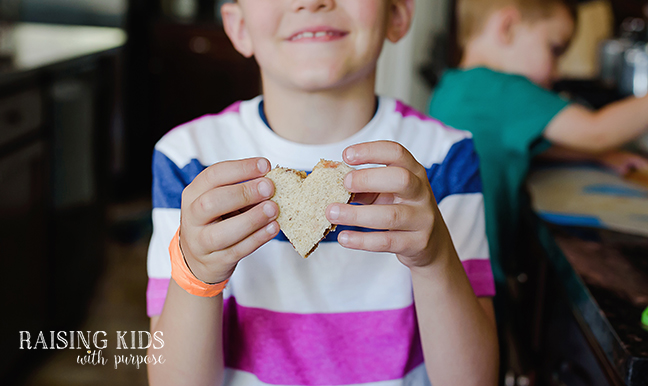
5. Savor
You have probably heard of this word in terms of savoring food, but did you know you can savor almost anything you experience?
Savoring is when you become mindfully engaged and aware of your feelings during positive events.
When you do this, your joy and happiness increase. Savoring can also improve relationships, better physical and emotional health, and increase creativity.
There are many ways to do this!
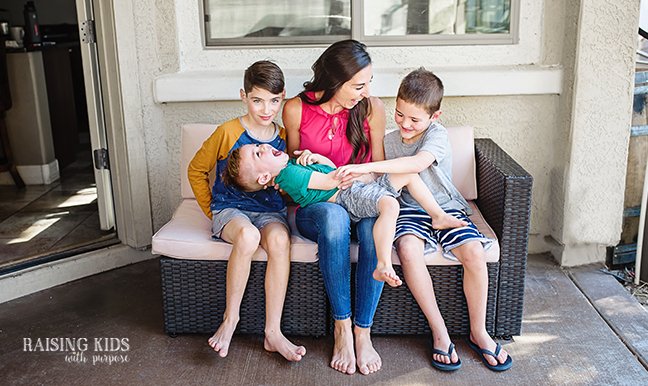
Create Mental Pictures
Teach your child to stop and become mentally aware of positive experiences.
Is your child having the time of his life at a soccer game? Encourage him to stop and think about how he feels. Mentally record the reactions of the other players, what it felt like to kick the ball, and even what the weather and atmosphere were like that day.
When my kids make their toddler brother giggle, I tell them to record that memory in their minds. By encouraging them to close their eyes, I have them think about what it sounds like and how that giggle makes them feel. Then when they open their eyes to see their brother’s adorable little face, they record what he looks like in their minds.
I did this a lot when that little guy was born. After having a rough pregnancy with extreme morning sickness and overwhelming amounts of sadness, his presence quickly became a time of joy that I didn’t want to forget.
Fully Experience Every Sense
It’s been fun to watch how this has impacted my son who is naturally pessimistic and suffers from anxiety. I encourage him to focus on one sense while thinking positively.
An easy way to do this is to cook and eat a favorite meal. While cooking, have your child hone in on his or her smelling sense by closing her eyes. Take a deep breath in to really enjoy that smell. Then when it’s finished, stare at the food to appreciate what it looks like. If they like textures, the food can also be savored while chewing and lastly, they can zero in on the yummy taste.
Compare the Experience
Get your child to look outside of her world and compare what she’s experiencing to others. Does she come to you saying she’s bored because she doesn’t have anything to play with?
Remind her that there are children who have no toys and to be grateful for what she does have. Or better yet, take her to donate a toy to one of those kids.
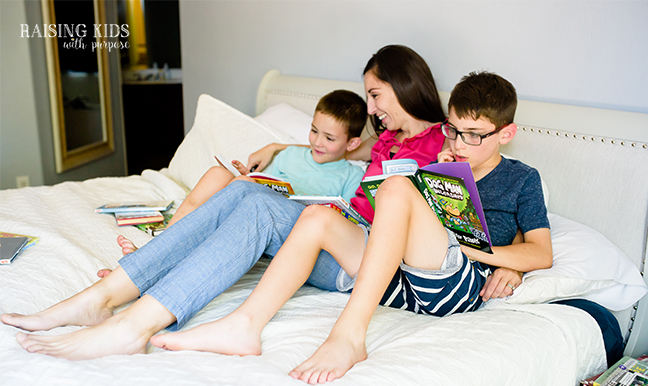
6. Read Books About Gratitude and Reciprocity
Research has shown that reciprocity of kind acts is not natural or instinctual. Instead, it must be taught.
A simple way to do this is to read a book that teaches this concept or simply show how you return kindness and gratitude.
We love this book, “Do Unto Otters” by Laurie Keller!
There are many other books that teach gratitude in a fun way.
7. Mental Subtraction
Experts suggest you take at least one day a week to do this practice. I think spending every Sunday night with your child would be a perfect time!
Encourage your child to think of a very joyous event such as when he got a new puppy, had a special time with grandma, won an award or trophy, etc. Then help him process what it took to get to make that event or experience possible.
Next, write down how it could’ve gone differently or what could have stood in the way of it happening.
Lastly, have your child shift his or her focus to remembering that the event actually did occur and that it wasn’t something that was for sure going to happen. Help them realize choices had to be made and certain circumstances had to fall in line to follow God’s plan. Remind them THAT is something to be thankful for.

8. Teach Empathy
“No one cares how much you know, until they know how much you care.”
– Theodore Roosevelt
Empathy is about seeing other people’s perspectives but ALSO caring about that person.
This idea goes hand in hand with emotional intelligence and can lead to so many positive things in a little person’s life such as forming strong relationships, developing acceptance for others, developing good mental health, creating high levels of happiness, and reducing toxic stress.
According to Goodstart Early Learning, “Building an understanding of what others are feeling, how their own actions can impact others, and why someone might be experiencing feelings at a particular time is a valuable life skill for children to possess.” And I believe it leads to raising grateful kids.
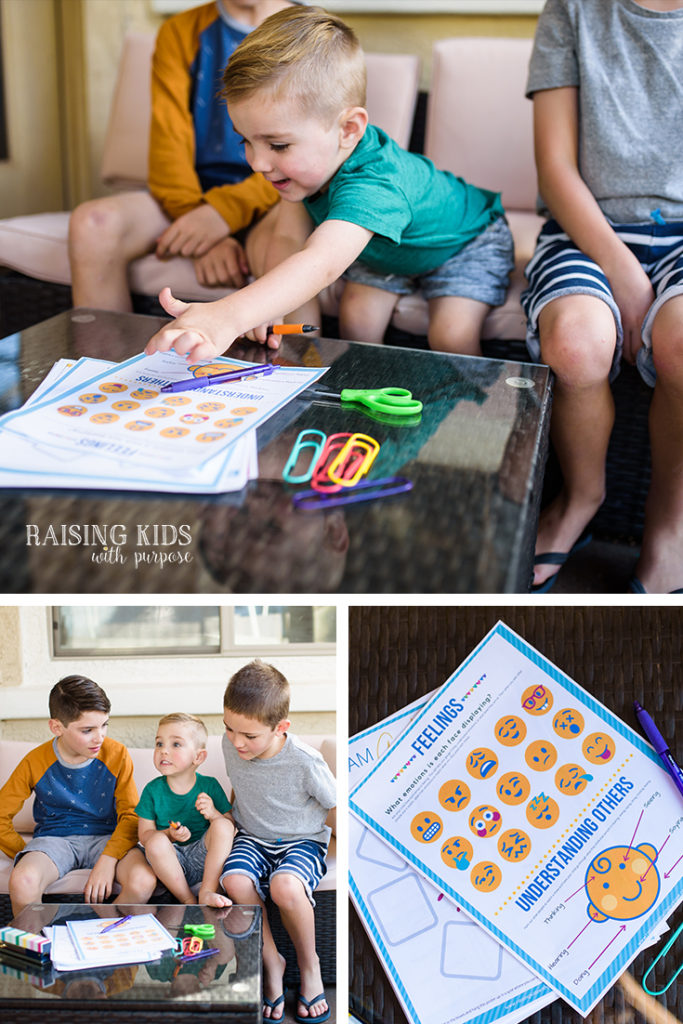
Fun Ways to Teach Empathy
- Point to and Mimic Emotions. We do this a lot with our toddler! Any time a child is crying at the store or someone is angry in our house, our little guy labels that emotion. When we leave the situation, I ask him to mimic that child so he can get an understanding of the emotion.
- Role Play. Act out different scenarios of people with different emotions.
- Point Out Animal Emotions. This one can be fun. Dogs and cats can be quite expressive so ask your child what kind of emotion she thinks she is experiencing. And if you don’t have a pet, point out animals you see outside or go to the zoo. How is the lion feeling today?
- Talk About Feelings. You want to ask your child how they feel about a situation, but if that’s not working, express how you felt about a certain situation when you were his age.
- Make a Feelings Collage. Take your old magazines and have your child cut out the people. Then under each photo, label how that person is feeling.
- Play a Game. Find a fun game that promotes empathy and understanding feelings. Here are a few I found on Amazon:
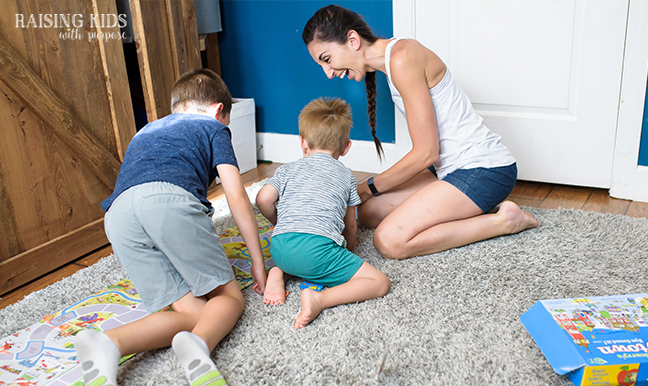
A gift for you! I have created a Gratitude Toolkit which includes two worksheets that encourage and teach empathy! Click here to sign up for the newsletter and receive the toolkit for free!
9. Give Your Kids Responsibilities
I love this quote,
“Do not do for a child what he can do for himself.”
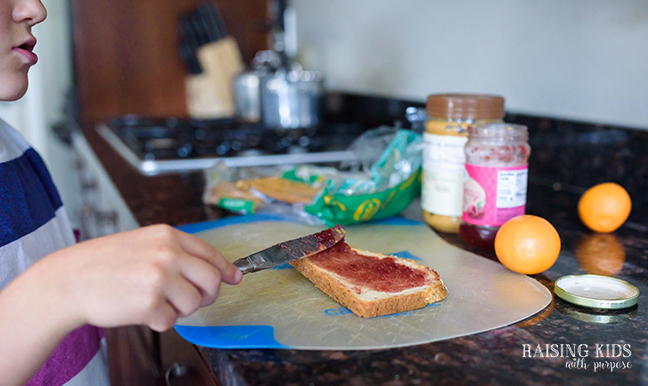
The reason is that when you do, you’re taking away so much. Not only a sense of competence but the ability for your child to fail and more importantly, learn.
We are all about giving our kids autonomy in this house which includes instilling the value of hard work to help and support each other.
If you are still doing your child’s laundry, packing his lunch, waking him up for school, and doing everything else for him, start small.
Chores and Contributions
Maybe begin with one chore a week. Let your child pick the time, day, and task. When kids feel like they are in charge, they are more likely to want to help.
One of my boys loves dusting and doing laundry because he gets to be in control of when and how he does it! I also show gratitude and thank him for helping me so I can spend more time with him to do fun activities! See what I did there, I’m modeling gratitude also while ensuring my child isn’t becoming entitled.

Routines
Help your kids come up with morning and evening routines so they can follow them without your help. I let my kids pick the order of their routines, made these awesome charts, laminated them, and hung them on our command center corkboard.
It has reduced the nagging so much and allows my kids to be thankful they can make their own choices and get themselves ready for school and bed without having to rely on me or my husband.
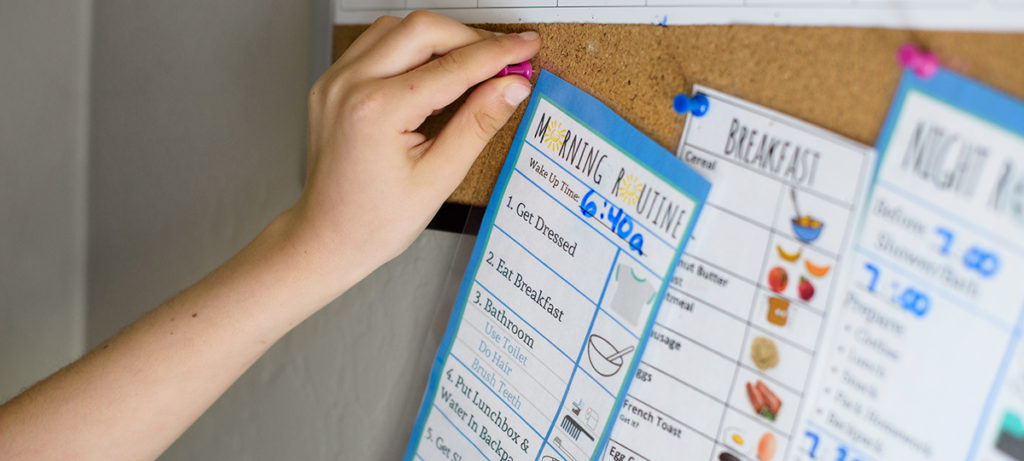
BONUS! Sign up for my newsletter and receive FREE routine charts!
Tools
A great way to help your kids take responsibility and in turn, learn how to be grateful for the privileges they have is to give them tools. We use timers for so many different things from homework to chores to screen time.
Our boys also wake up using an alarm clock. After spending a ton of time reading and seeing what praise and rewards were doing to our kids, we threw all the sticker charts away. There are lots of other tools, mental and physical, that kids can use to become self-motivated and competent.
10. Teach Humility
Gratitude is born of humility, for it acknowledges the giftedness of the creation and the benevolence of the Creator. This recognition gives birth to acts marked by attention and responsibility. Ingratitude, on the other hand, is marked by hubris, which denies the gift, and this always leads to inattention, irresponsibility, and abuse.
~Mark T. Mitchell, Professor of Political Science at Patrick Henry College in Virgini

In order to overcome ingratitude, our kids need to understand how to be humble. This allows our kids to turn outside of themselves.
A truly humble person understands that the life he or she has been given is a gift rather than a right. Humility protects them from expecting to get everything they want without thinking anything needs to be owed in return.
And yet, humility is NOT natural.
Teaching your kids to be humble is a lot of ways the same as all the ways to teach them gratitude. In addition, talk about it and call them out when they are acting as if their poo doesn’t stink. But of course, do it in a connective non-shaming way.
Gratitude Changes Everything
Remember, we have the power to encourage compassion, kindness, empathy, and happiness in our children’s lives. The number one way to make sure you are raising grateful kids is to teach them how to express gratitude for all they have and get to do.
In summary, here are the Top 10 Ways to Teach Gratitude to ensure we are raising grateful kids:
- Model
- Talk About Thankfulness
- Volunteer/Give back
- Create Gratitude Habits
- Savor
- Read books about Gratitude
- Do Mental Subtraction Exercises
- Teach Empathy
- Give Your Kids Responsibilities
- Teach Humility
Don’t Forget! Your Free Gratitude Toolkit
I created a gratitude toolkit to help you with raising grateful kids. It includes:
- A fill-in-the-blank gratitude poster
- A FUN worksheet to teach your child about emotions and how others feel
- A worksheet to help your child understand what his or her strengths are in understanding others and what he or she can improve upon.
- Daily reflection cards for the whole family
- Random acts of kindness hearts to help your children find ways to bless others
What Are Ways You Teach Gratitude?
Do you have a daily practice or volunteer? Do you feel like you are raising grateful kids? I’d love to hear all about it! Comment below or email me at adriane@raisingkidswithpurpose.com!


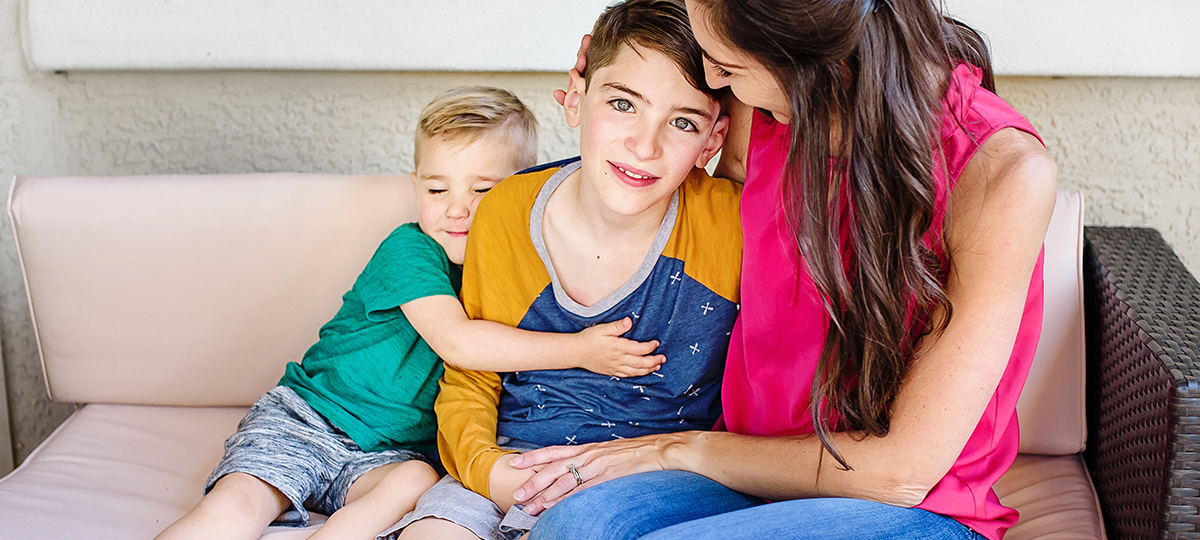


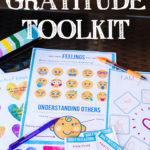

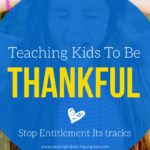


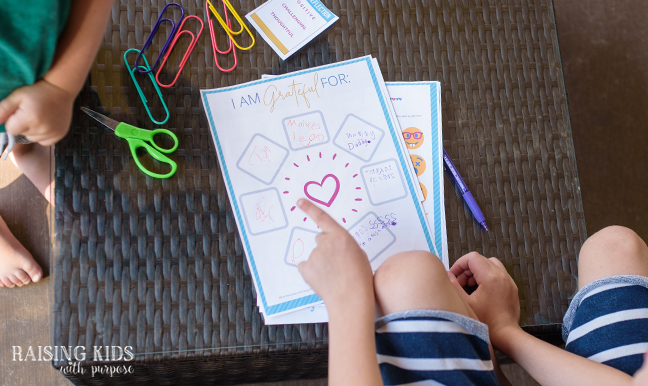
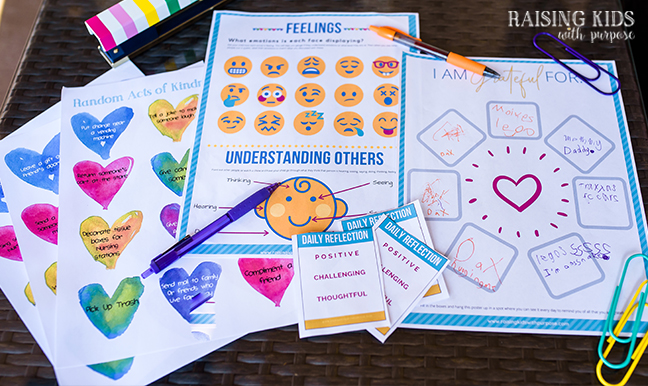
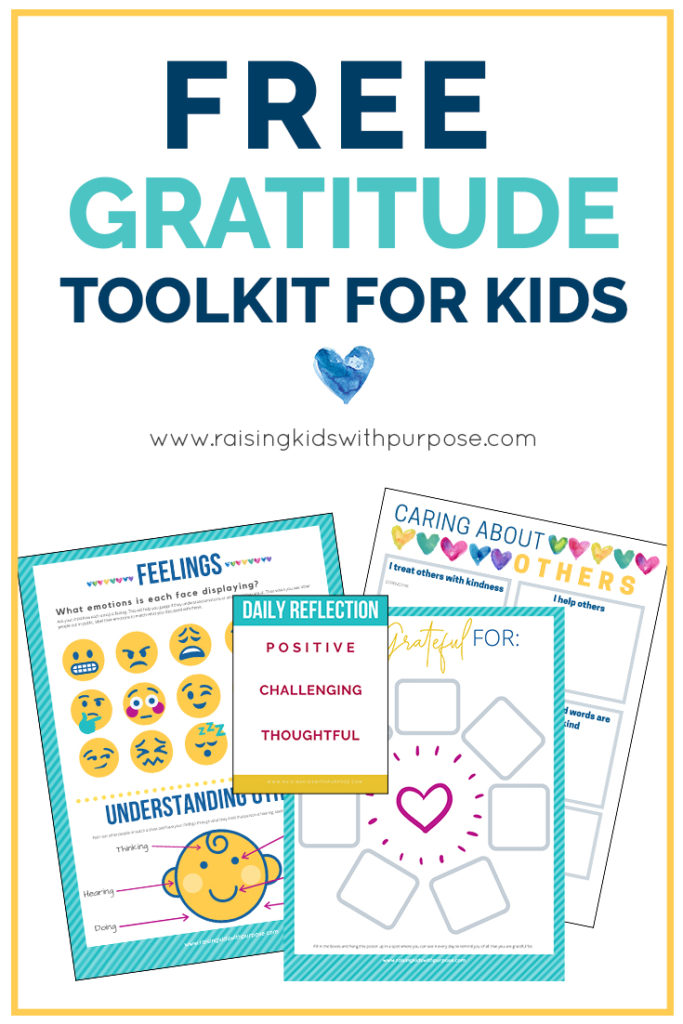
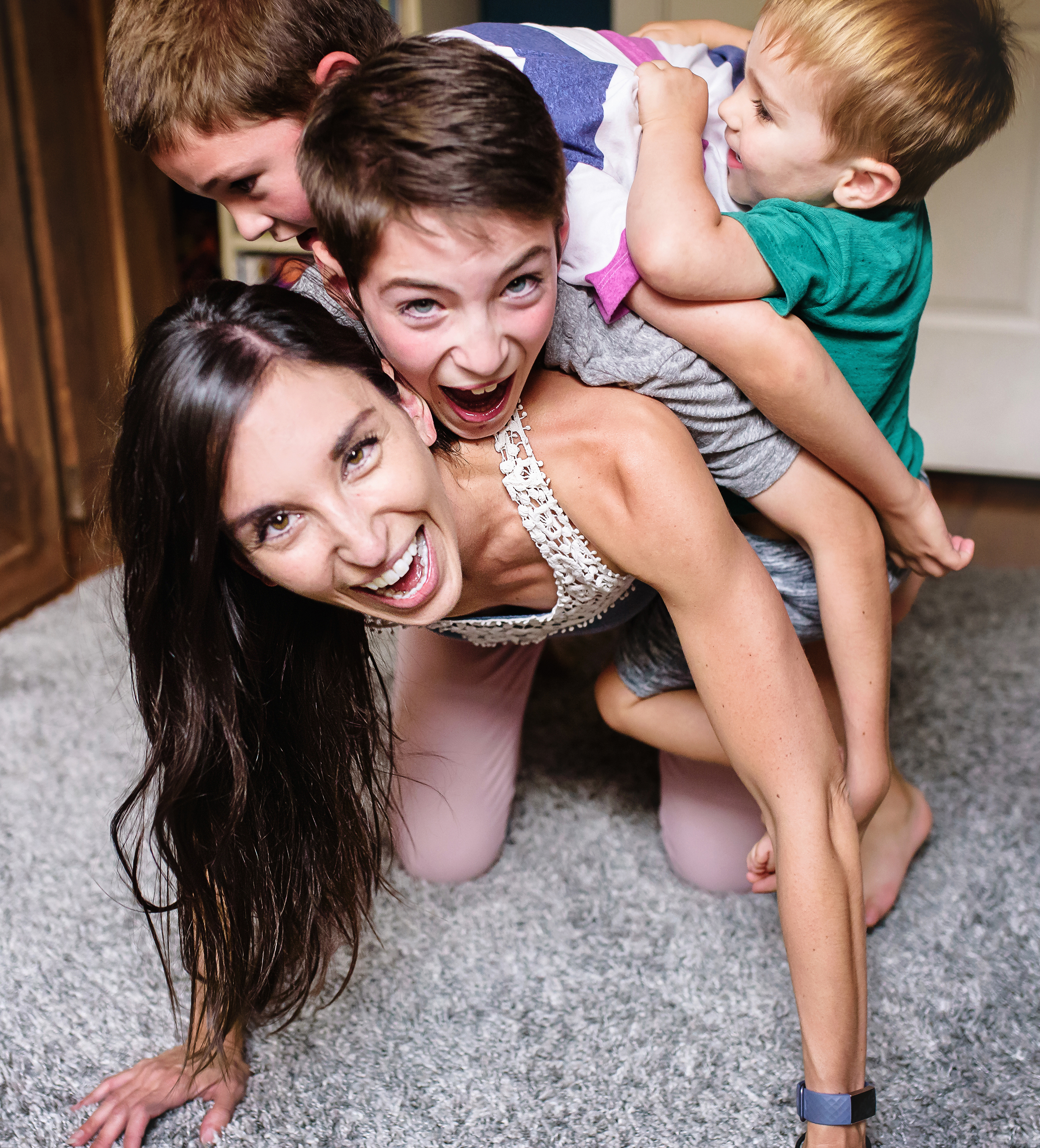
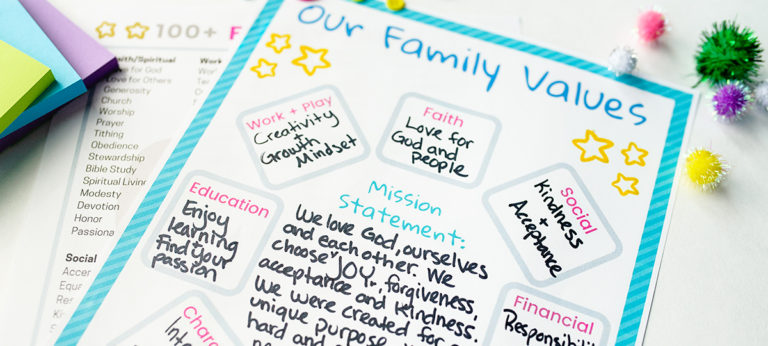
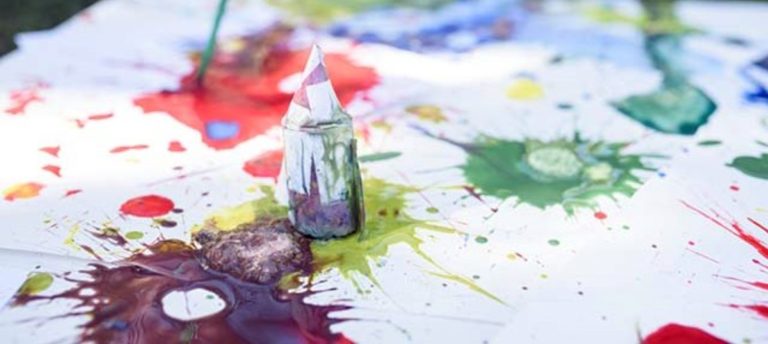

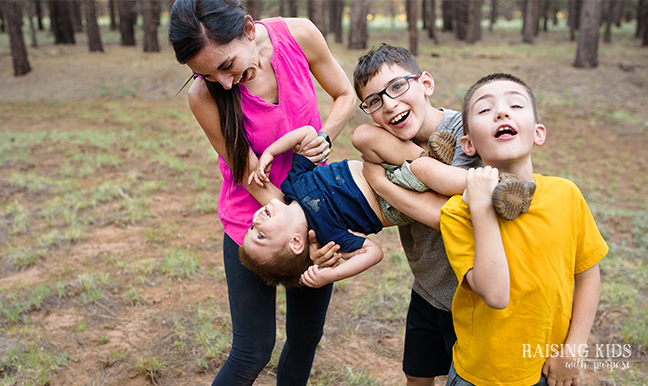
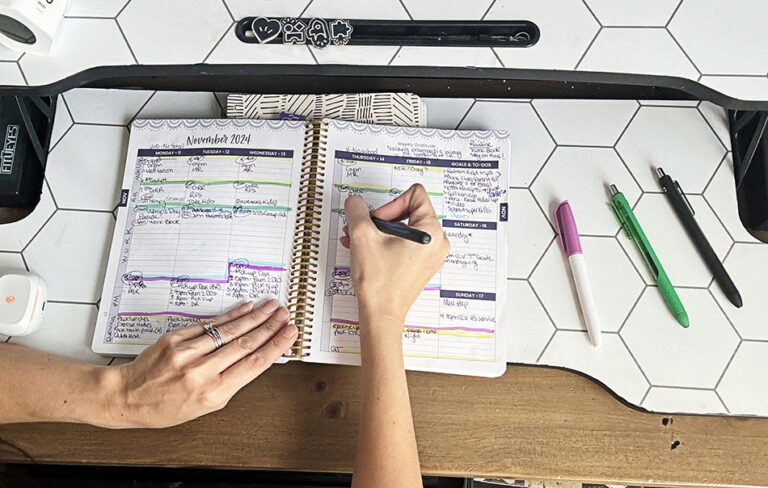
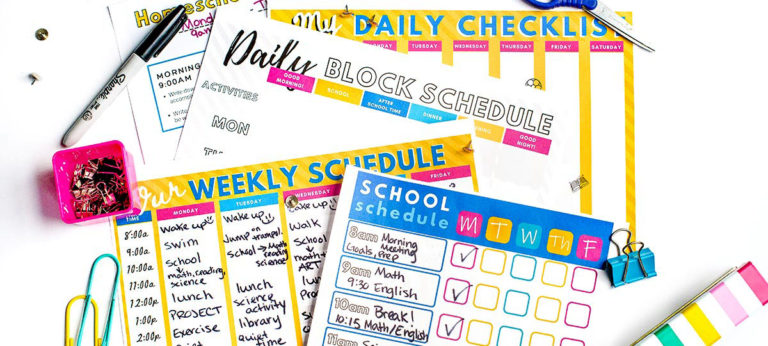
Love that you are focused on this with your kids and encouraging us all to be more intentional about allowing our children opportunities to learn about gratitude! You rock! 🙂
Thank you!
Wonderful post! I love the idea of teaching my kids to pay it forward 🙌🏻 I especially loved the part about empathy and emotional intelligence. I feel like this is a huge thing, specifically with being a fellow boy mom! There is a stigma surrounding boys showing their emotions when there shouldn’t be! You’ve given me lots to think about and put into practice w my sons ✌🏻🖤
Awe what a sweet comment. I never thought about the boy thing. And yes, it’s so important to teach emotional awareness and for them to know that emotions are healthy!
Thank you for sharing these awesome suggestions. I love the practices like journaling, even at a young age. Thanks for sharing.
Thank you! It’s hard to remember to journal but it can be a powerful tool for sure!
I am always so shocked when people compliment me because my kids say please and thank you. I can’t imagine not teaching your kids to do that!
I agree!
I love this post so much!! We have the 3 Minute Gratitude Journal. Being thankful is a huge aspect at our home too!
We really need to get one of those. They look amazing!
I love this post so much. My son just turned two and I have been trying to figure out how to teach him manners and about his emotions. Thank you so much for this!
It’s so fun to teach two-year-olds about emotions. I’m having a blast with it!
Thank you so much for this post and all the information you freely share to help us teach gratitude to our children! I’m always amazed by the amount of education packed into each one of your posts. I’m pinning this! I subscribed to the toolkit too. We homeschool so I am going to try to work it in to next weeks school schedule.
Thank you thank you for all your sweet comments! Let me know how it goes!
Wonderful tips! So important for our little ones to learn!
It really is!
Love this idea!
Thank you!
I love the idea of making a gratitude journal! That would bring a moment to sit and reflect everyday and would become a great daily habit. Awesome ideas!
Me too! I wrote it but we need to do it!
This is such a great and important post. I love the idea of talking about gratitude around the dinner table. Family table time is important for us to talk and socialize.
Love “family table time”. It was a big part of my childhood and so has been very important for our family, too!
Great tips about teaching gratitude. I do think that even many adults don’t stop to think about what they are grateful for and thus can’t truly teach kids. We do teach, almost reflexively, to say “thank you” but it’s usually taught as part of good manners and not true gratitude.
This is so true. Thank you is only the tip of the ice berg. Or maybe the leaves; gratitude is the roots 😉
Modeling gratitude all the time is so important our kids learn so much from what we do and say.
They really do watch everything we do.
Such an important thing for kids to learn. These are all great ideas to help foster a grateful attitude in children.
Thank you!
I definitely agree with modeling behavior!
That’s with anything, right? 🙂
I completely agree. My children are still very young (2 and 1) but I try to think of simple ways they can understand and express gratitude. It has been the thing that has kept me grounded.
My two year old is catching on to empathy so quickly. It’s amazing how much he already understands being so young. Grounded is a great word!
These are such excellent tips for raising grateful and more fulfilled children. Loved the part about empathy and emotional intelligence! Spot on!
Thank you so much! Emotional intelligence is so important and it can be super fun to teach 🙂
This is such a great post! The attitude of gratitude needs to start at a very young age. And it starts with us as parents having gratitude.
Yes, it really does start with us! Thank you 🙂
Thank you for sharing! Thank God my daughter is respectful and appreciative.
She had to learn it from somewhere 😉
What an incredible post. Raising kids in general is no easy feat, but raising them with Gratitude is truly a gift. It is so important that our kids learn to be grateful, and it’s so true, modeling it for then and instilling it through ongoing conversation and writing it down are paramount. Thank you for the downloadables and for the reminders here.
Thank you so much!!! Gratitude is such a gift. I love that you put that. And you are so correct!
What a great, comprehensive post! And I LOVE your free printable toolkit, too! Every night before bed we have our girls reflect on the best parts of their day, and count their blessings out loud – it is so important to teach them gratitude from an early age!
I love this so much!
So important to raise our children to be grateful and empathetic. I love how you have explained in deatils all of the above.
It really is. Thank you!
I am very excited about the printables! I know I will enjoy doing these with my children. It is always good to remember that there are things we need to be teaching our kids besides behaving and being kind. You have come up with some great tips and ideas I want to put into action in my home! Thank you.
Awe what a sweet comment. I love creating tools so it absolutely warms my heart to know they are going to be used for good! Thank you!!!
We noticed our son wasn’t showing gratitude so we started a homeless ministry. It’s been a game changer for him.
You started your own ministry? That’s incredible!
Such a great post. Filled with lots of great information. I will follow everything you said on this post.
Thank you!
I love this post. Very helpful. I’ll definitely keep these tips in mind. Thanks for sharing.
Thank you!
It is so important to teach kids gratitude and to pay it forward. We started getting our daughter involved with picking gifts for our angel this year. It’s so important to teach them that not everyone is in the same situation we are and helping others is important.
I forgot about that program! We do Operation Christmas Child every year. My kids look forward to our church’s packing party! I love that you are giving your children the gift of giving to others <3
There’s some great tips. Our boy has autism & learning disabilities we have to work really hard to help him with his understanding of things, there’s definitely things within this post we can utilise with him so thanks
Yes, I completely understand. I do a lot of research on autism and neurodiversity so I try to apply tips to all kids with an understanding that every single kid is unique and not everything will work for everyone.
I am so happy to see and read your post. I really believe that it is very important to teach gratitude to our kids. And it is wonderful if we can start as early as we could. Thank you so much for sharing these tips. I just shared your post too with the World Gratitude Summit group
Awe thank you so much Clarice! I really appreciate it and your sweet sweet comment!
This is a great way to break it all down, I often find my kids saying the words but not really showing that they are truly gracious. We recently started the gratitude journals, so I’m hoping this helps!
Yes! That’s the key is to teach empathy so they actually have meaning behind the words!
Woah! This article on Different and Exciting Activities to Do with Kids” is a game-changer! 🎉🌈 And speaking of kid-friendly awesomeness, I’ve got a similar article loaded with kindness ideas at https://aliciaortego.com/acts-kindness-kids/. Let’s keep the good vibes rolling! 🤸♀️💕 #KidFun #SpreadKindness
Hello.This article was extremely motivating, especially because I was searching for thoughts on this topic last Monday.